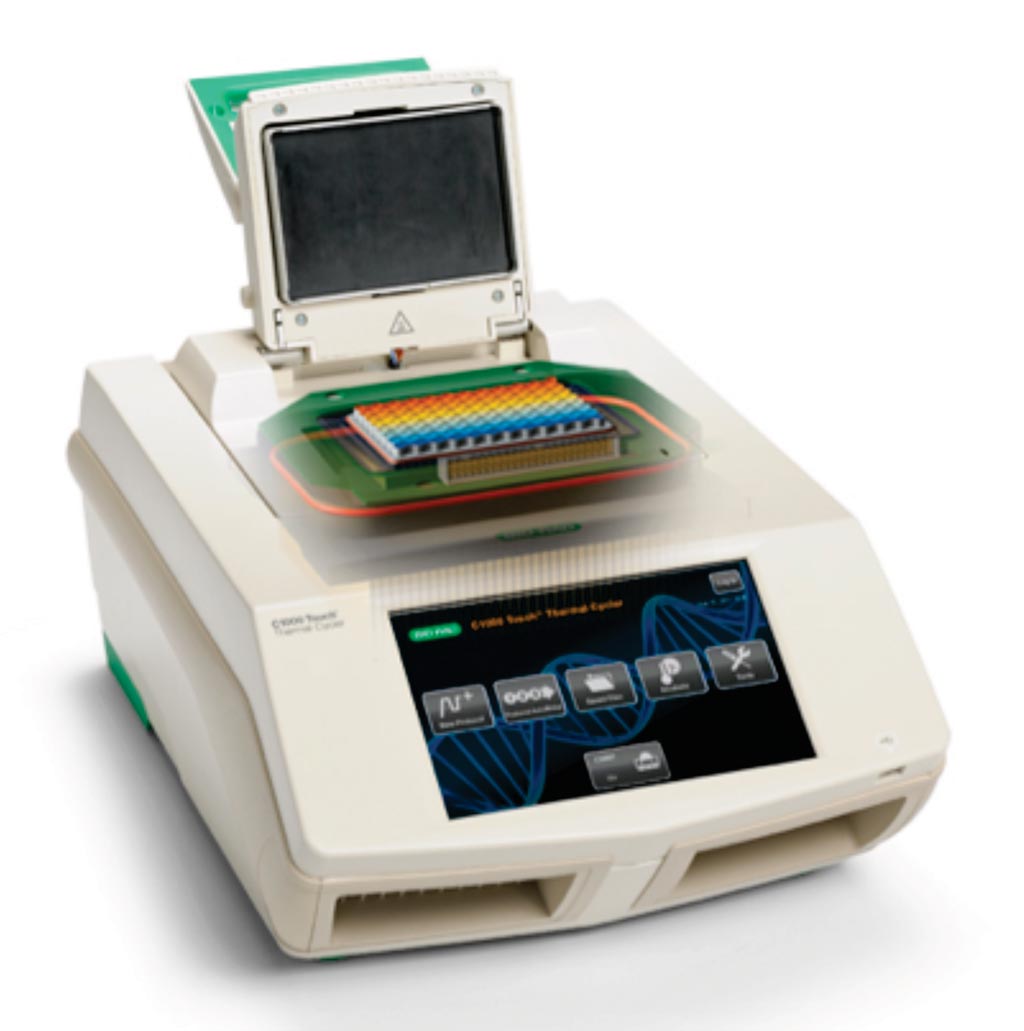Assays Using ddPCR Quantify DNA Fragments
By LabMedica International staff writers
Posted on 15 May 2018
Optimized droplet digital polymerase chain reaction (ddPCR) assays have been developed that quantify short and long DNA fragments. These assays have been used to analyze plasma cell-free (cfDNA) fragment size distribution in human blood.Posted on 15 May 2018
Circulating cell-free genome in human body fluids is being utilized as a source of genetic material for noninvasive screening, diagnostic and prognostic tests in clinical practice. Plasma cfDNA fragment size distribution provides important information required for diagnostic assay development.

Image: The C1000 Touch thermal cycler (Photo courtesy of Bio-Rad).
Doctors at the University of Nebraska Medical Center (Omaha, NE, USA) and their colleagues collected blood samples from certified healthy donors and first trimester pregnant donors. Plasma was separated immediately after blood draw by two centrifugation steps. Exosomes were isolated from cell-free plasma using Invitrogen Total Exosome isolation from plasma kit.
Plasma and plasma exosome DNA was extracted using QIAamp Circulating Nucleic Acid Kit. Bio-Rad Automated Droplet Generator was used to generate droplets and thermal cycling was done using Bio-Rad C1000 Touch Thermal cycler. DNA extracted from blood plasma was analyzed using Agilent Bioanalyzer 2100 instrument and Agilent DNA High Sensitivity Kit.
The team developed and optimized four different EvaGreen chemistry based ddPCR assays to amplify four different amplicons with different sizes from human β-actin gene in order to accurately quantify cfDNA with different sizes in human blood plasma. They used concentrated human blood plasma cfDNA as genetic material for the development of these assays. These assays amplify 76, 135, 490 and 905 bp amplicons from human β-actin gene.
The study showed that cfDNA in human blood plasma has two localizations. Blood plasma exosomes are one such localization harboring cfDNA of mostly small fragments. About 72% of cfDNA localized in exosomes are small DNA fragments, less than 490 bp. Blood plasma apoptotic bodies and nucleuses are the other localizations where cfDNA is present. DNA concentration in plasma pellet was seven-fold higher than plasma cfDNA.
The authors concluded that non-pregnant plasma cell-free and exosome DNA share a unique fragment distribution pattern, which is different from pregnant donor plasma and exosome DNA fragment distribution indicating the effect of physiological status on cfDNA fragment size distribution. Fragment distribution pattern for plasma pellet that includes apoptotic bodies and nuclear DNA was greatly different from plasma cell-free and exosome DNA. The study was published online on April 12, 2018, in the journal Clinica Chimica Acta.
Related Links:
University of Nebraska Medical Center













